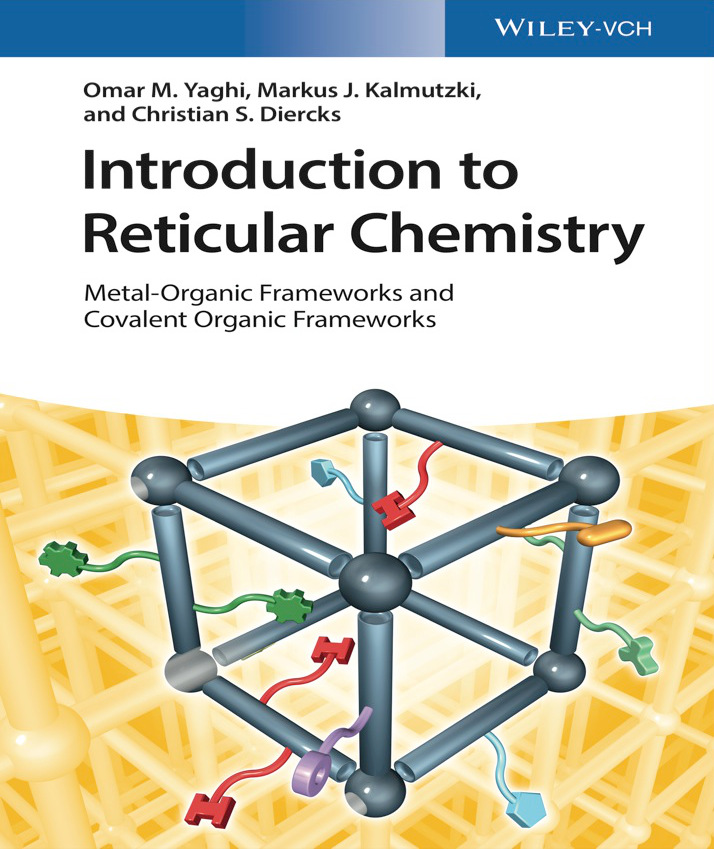Book review: Introduction to Reticular Chemistry
Reticular Chemistry is concerned with the linking of discrete molecular building units into crystalline porous extended structures through strong bonds. This chemistry is championed by novel classes of 2D and 3D extended structures among which metal–organic frameworks (MOFs) and covalent organic frameworks (COFs) are the most well-established ones. Despite the vast amount of work and the still striking increase of publications each year on reticular materials, there remained a noticeable absence of a general textbook that conveys the underlying principles of this field to not only active researchers, but also undergraduate and graduate students or other newcomers to the field.
Introduction to Reticular Chemistry — Metal–Organic Frameworks and Covalent Organic Frameworks by Omar M. Yaghi, one of the pioneers in the field, along with his brilliant mentees Markus J. Kalmutzki and Christian S. Diercks, fills this void. The book is structured such that it can serve as a textbook in the classroom and comprises four main parts: (i) Metal–organic frameworks (MOFs), (ii) covalent organic frameworks (COFs), (iii) applications of MOFs, and (iv) a selection of special topics (e.g. dynamics in framework materials). It covers all aspects of the field of reticular chemistry, encompassing the design and synthesis of frameworks using molecular building blocks, the functionalization and structuring of MOFs and COFs, and their physicochemical properties as well as their applications.
The book excels at explaining the thought process that goes into constructing a framework with the desired metrics, structure types, and functionality and carefully illustrates how this control over matter in 2D and 3D with atomic precision translates into energy and environment related applications. Every chapter features an extensive number of exemplary structures making the book a valuable reference for anyone working in the field from beginners to experts. To aid in a better understanding, vivid illustrations of the molecular structures are presented throughout the book and their electronic files have been made available online.
The heart of the book is part 1 and 2, which elaborate on the design, synthesis, and functionalization of MOFs and COFs, respectively. These two parts commence with a historical perspective on the development of reticular materials with special emphasis on overcoming their synthetic challenges and identifying their unique properties. Following this, the geometrical and topological design principles, the proper choice of building blocks, synthesis conditions, and functionalization strategies, and the guidelines to structuring the morphology of the resulting material on the nanoscopic and microscopic level are discussed. Part 3 describes the basics of gas adsorption and separation in general and outlines strategies to tailor MOFs for targeted applications in carbon dioxide and water capture, methane and hydrogen storage, as well as liquid and gas separations. In part 4 a number of related material classes (metal-organic polyhedra, covalent organic polyhedra, and zeolitic imidazolate frameworks (ZIFs)), dynamics in MOFs and COFs, as well as the topological description of reticular frameworks are detailed.
Reticular Chemistry is an interdisciplinary field that impacts many areas ranging from synthetic organic and inorganic chemistry to physical chemistry and material science. The unique appeal of this book is that it covers all of these aspects which makes it addressable to a wide range of readers in chemistry, material science, physics, and engineering.
Angew. Chem. Int. Ed. 2019, 58, 2



